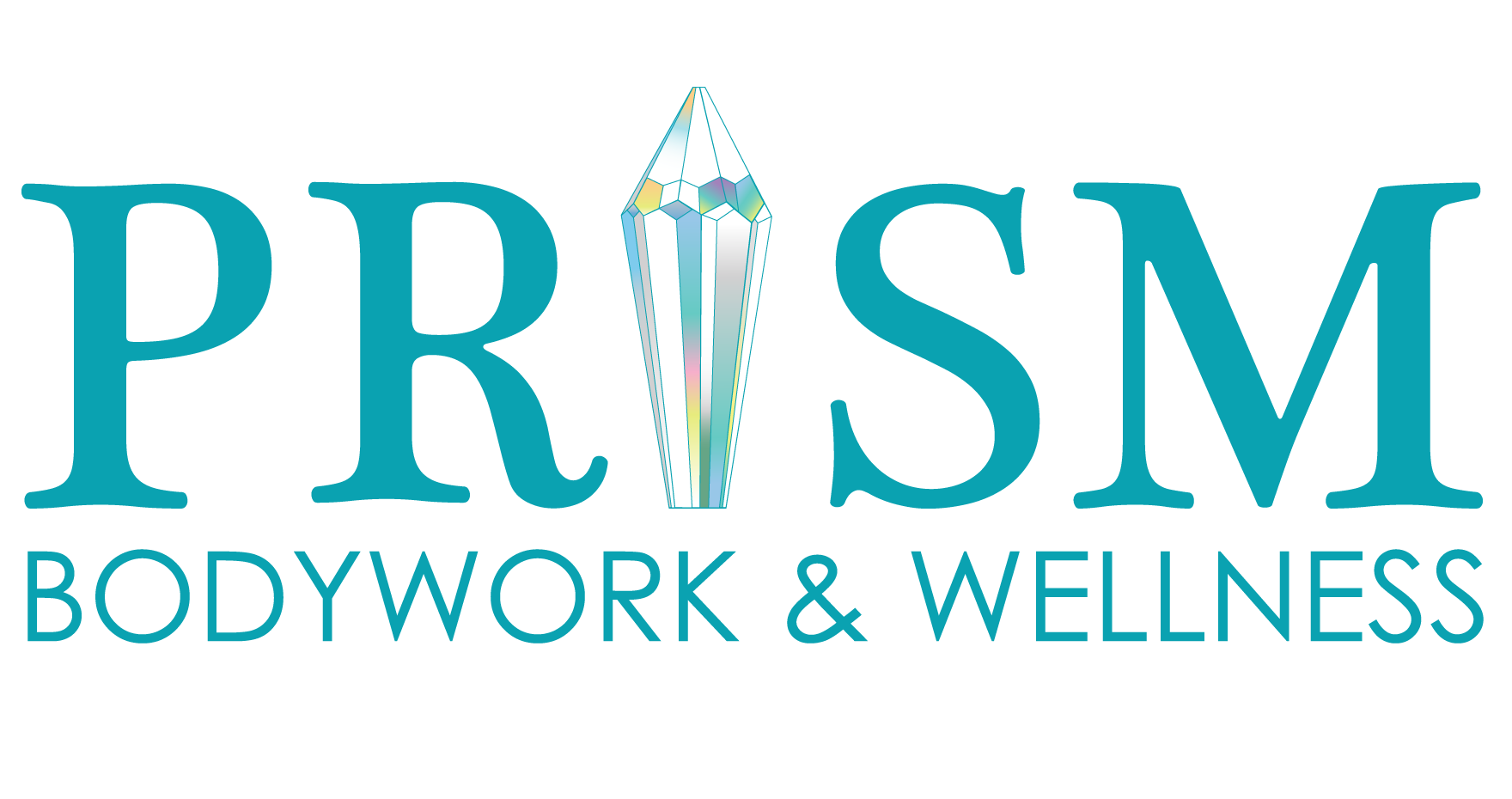The TRUTH About Deep Tissue Massage: Expert Tips and Common Misconceptions
Is your deep tissue doing more harm than good? Many people (including massage therapists!) often misunderstand what “deep tissue” really means. That’s because it’s subjective, and varies from person to person. What one person may consider deep is not what someone else might consider deep. The problem with this is that when done incorrectly, a bad massage can leave someone worse off than when they came in. Luckily, there are safe and effective ways to give a proper deep tissue massage.
In this article, I’ll break down exactly what “deep tissue” (DT) means to me, and I’ll list the top 5 mistakes I see massage therapists make when it comes to DT.
For starters, let’s talk about what DT is not. It’s not:
- Pushing a client past their pain levels,
- Forcing the muscles to submit,
- Diving straight into the deep spots without warming up,
- Leaving bruises,
- Going immediately to pinpoint sore trigger points,
- Your client screaming “ouch” and coming up off the table,
- Leaving the client horribly sore the next day.
THAT 👆 is an uneducated therapist. 🙄 Yeah…I’m calling them out, and they know who they are. They’re the ones that brag about how DEEP they can go, who care more about their egos than they do about their clients, who ignore the obvious signs of pain and bulldoze people because they secretly or (openly enjoy) it.
Therapist like these keep a job because they either
- a) have clients that actually like to be tortured because they are so dissociated from their bodies that pain is the only way they can actually FEEL something
- b) their clients have been too shy or uncomfortable to say anything,
- c) their clients are under the false impression that it’s supposed to hurt.
What they probably don’t know is how much harm they’re actually doing.
That old adage “If it ain’t hurtin, it ain’t workin” just isn’t true. Read my lips: 👄 it’s not supposed to hurt that much! 👏
Will you be a little sore after a deep tissue massage? Yeah, probably. That’s normal. Will it be uncomfortable during the session? Yes, sometimes it will be slightly painful or maybe even extremely uncomfortable, but it should ease up quickly and go away within a few seconds. If it doesn’t, that therapist is going too deep, too fast.
Should you be bruised the next day after getting DT? Hell no! 🤦♀️ (Unless you are anemic or prone to bruise easily, in which case you might be.)
How do we define deep tissue?
Deep tissue is a term used to describe massage modalities targeted at the deeper tissues of the body.
There are 4 general layers of tissue:
- Skin
- Connective tissue (fascia)
- Superficial muscles
- Deep muscles
The goal of deep tissue is, you guessed it- to get to the deep muscles. Those deep muscles are where we often have pesky knots and trigger points. The trouble is, they are UNDER your skin, fascia, adipose tissue, and superficial muscle layers.
In order to get to the deep muscles, we must first relax and warm up the superficial layers. An impatient or uneducated therapist will be tempted to just dive right in and “go for gold,” However, this is not only highly ineffective, as it aggravates, inflames, and creates more pain, but it’s also very insensitive to the person as a whole.
In addition to being more painful, going too deep, too fast, can, and often DOES, trigger a trauma response. It can bring up stored emotions, taking the client from feeling fine to suddenly feeling overwhelmed. It can trigger a physical protective response of tightening to protect the area, which then creates a push/pull resistance between the practitioner and the client, not only physically, but mentally and emotionally as well.
I’ve found that clients who show up with a lot of big emotions sometimes benefit from getting a Reiki Massage instead of DT. You’d be amazed at how much relaxation and healing can occur at deep levels with a lighter, energetic approach!
Sometimes clients who know they need deep tissue are impatient with a softer touch because they want deep. This can often because they get annoyed by too light of a touch.
It’s important to remember that too light of a touch can ALSO trigger a trauma response. It sends a tickle sensation which tells the body to tighten and protect. Often when we feel ticklish, it’s because of an emotional trauma that is right under the skin.
When this happens, the practitioner needs to back off, soothe the affected area with a lighter touch, and re-establish trust before being able to go back into the target area.
How can we approach Deep Tissue properly?
As massage therapists, our top 3 goals should be to:
- Establish safety. We do this by using firm, broad pressure, not too deep, and not too light. We start at an area that is less painful, and gradually move closer to the pained area to signal to the body and the subconscious mind that they are safe to relax.
- Encourage relaxation. The more relaxed a person is, the easier it will be for their muscles to relax and for us to go deeper. We support this by not talking too much, encouraging our clients to breathe more deeply, and helping them move from their thinking mind to their feeling body.
- Take our time. We don’t force, we seduce. We do this by warming up the superficial layers, including fascia, first before going deeper.
After these three key areas have been attended to, then, AND ONLY THEN may we begin to address deeper areas that need our attention.
Sometimes clients think that when they ask for deep tissue, the entire massage should be deep. I hate to break it to you, but it just doesn’t work that way. Not only is it counterproductive for the client’s body, it also creates a whole lot of extra work for the therapist.
The goal of getting a massage for both practitioner and client should be to work together as a team. When done correctly, the properly trained therapist will be able to go as deep as is needed to support the clients healing, while also making sure not to harm them.
Here are the top 5 mistakes I see other massage therapists make when it comes to practicing deep tissue massage:
-
- Being impatient. I get it- they usually only have an hour or 90 minutes to get some significant work done. As a therapist you want to get in and get out, and make it count. However, patience is key. Being impatient can cause more harm than good. It can leave a person with bruises, lasting soreness, and can even prevent them from ever getting a massage again. At worst, it can leave a client in shambles if you trigger their trauma response, and they may not reschedule, or worse, they’ll tell all of their friends not to come see you. They will also do that if you are:
- Not listening to the client. The client speaks in spoken words and unspoken body language. If they say they want deep tissue, find out WHY. White often, they don’t know what deep tissue really means. They think it just means that you’ll touch them with firm pressure, which, if you are a good therapist, you are already doing. Do they have a specific sore spot? Do they have ticklish spots? Do they want to relax, or do they want therapeutic benefits? Do they have loss of range of motion of the affected area? Do they have persistent pain that hasn’t been relieved with other treatments? These are the types of questions you should be asking (and being asked, if you’re the client) to determine what type of depth this client needs. Then, listen to the client’s BODY! If they tighten up, you’re going too deep. Back off, and invite the client to breathe more deeply. This means
- Working against the client instead of with the client. Working with the client means not forcing the muscles. You are not the hulk. Please don’t go hulk on a client and force them into submission. If they aren’t relaxing, you are doing something wrong. Figure out what it is and immediately correct it. Many times, the client is unable to relax because they are in their heads, or they have pain in their body that is keeping them tense, or you’re hurting them and they’re not saying anything. This is why we establish relaxation first with gentle, comforting touch. Sometimes, they aren’t relaxing because you are
- Talking too much. If you’re talking, you’re not doing as good of a job as you could be doing if you were silent. That’s a fact. Sorry, but shutting up is a virtue, and it’s one you should definitely learn if you’re a massage therapist. Remember- the key is to get your client to relax to make your job easier. If they’re talking, they’re not relaxing. If you’re talking, you’re not paying very close attention. Do the both of you a favor and encourage as little talking as possible if your client really wants a good deep tissue massage.
- Not being trauma informed or sensitive. Here’s the deal: trauma is stored in the body. Usually, the deeper it is, the older and more traumatic it is. This means that a lot of trauma and stored emotions can come up when working on the deeper tissue layers. If you’re not aware of this, and feel uncomfortable or don’t know what to do when this happens, you shouldn’t be working with clients, as you’re likely to cause more harm than good. Please read my blog post about trauma healing to get a good idea of where to start!
So what IS a proper deep tissue massage?
It will look different for everybody, but ideally, it’s safely and effectively releasing tight knots and muscle tension in the deeper muscles WITHOUT CAUSING MORE HARM!
After a proper deep tissue massage, you should feel VERY relaxed. You should feel better than you did before your massage, with significantly less knots and tension.
You may be slightly sore the next day, but it’s nothing that a hot bath with epsom salts, proper hydration, and a good night’s sleep can’t fix.
The truth is that deep tissue massage varies from practitioner to practitioner, and client to client. That’s why it’s important to choose a good therapist who knows what they’re doing, who communicates and is properly trained and educated. It’s also important as a client to communicate your needs, ask for what you want, and work with your therapist rather than against them.
Working together in this way, massage therapists and their clients can create a powerful deep tissue experience that is both healing and satisfying.
Are you a woman looking for a therapeutic massage with deep tissue focus on key areas? Click this link to schedule a session with me!
Related Posts
The Trickster
It’s half past six in the morning, and I’ve just woken up to take Pedro outside for his morning business. The sky is still dark, and the brightly shining stars are visible. Nearby, a large pack of coyotes is howling and making strange squealing noises. McCall is beautiful, but wild, in the mountainous North country…
Read More4 Natural Ways to Transform Your Life Through Self-Awareness | Temple Gladstarr
When did you last give yourself permission to truly feel what your body has been carrying? If you’re reading this while mentally running through your endless to-do list, wondering when you’ll ever have time for yourself – this message is especially for you! As we near the end of this summer season, I’d love to…
Read MorePlant Medicine Ceremony with Manari Ushigua: A Transformative Experience in Boise, Idaho
How an Indigenous Spiritual Leader from Ecuador’s Sapara Nation Brought Ancient Wisdom to the Heart of Idaho An Extraordinary Gathering of Sacred Wisdom Last week, something truly magical happened in Boise, Idaho. We had the incredible honor of welcoming Manari Ushigua Santi, leader of the Sapara nation of Ecuador, Indigenous Spiritual Leader, and passionate defender…
Read More


